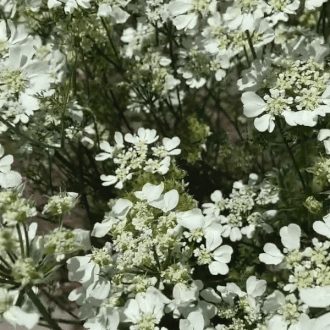#bee plant
Text

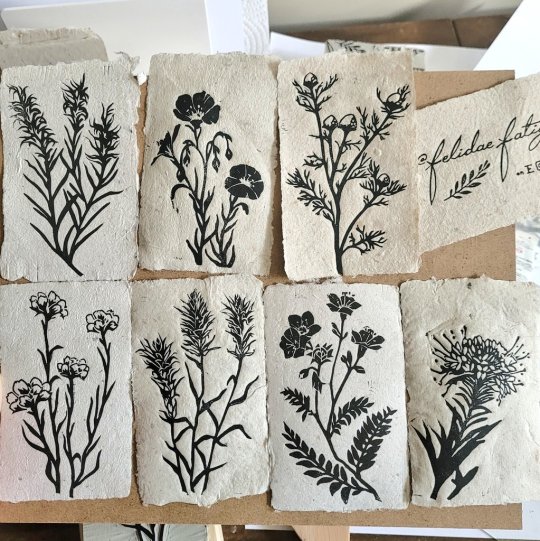
Must bombard every social media with new pretties
#cat scratches#linocut print#lino print#alberta#yyc#native plants#pussytoes#jacobs ladder#gay feather#pineapple weed#wild chamomile#red paintbrush#wild blue flax#handmade paper#papermaking#printmaking#print artist#cottagecore#bee plant
116 notes
·
View notes
Text
#Bioregions and Ecoregions of North America | Interactive Map#Bioregions and Ecoregions of North America#BPlant#Botanical Plant#Botany Plant#Bee Plant#Natural Connections#Oklahoma Ecology#Bookshelf#Tumblr Staff Has Ruined Links Now And I Hate Them For It#Casual Reminder That Oklahoma Is NOT A Midwestern OR Southwestern State#Prairie Magic & Medicine
1 note
·
View note
Photo

Bumble on Rocky Mtn. Bee Plant
© 2022, James Blatter
#bumblebee#bee plant#beneficial insects#nature photography#insect photography#purple flowers#cute animals
6 notes
·
View notes
Text
Nature is healing.
I burned the Meadow a couple weeks ago. At first it looked like nothing but charred ashes and dirt, with a few scorched green patches, and I was afraid I'd done something terrible. But then the sprouts emerged. Tender new leaves swarming the soil.
My brother and I were outside after dark the other day, to see if any lightning bugs would emerge yet. We had been working on digging the pond. That old soggy spot in the middle of the yard that we called "poor drainage," that always splattered mud over our legs when we ran across it as children—it isn't a failed lawn, and it never was.
Oh, we tried to fill in the mud puddles, even rented heavy machinery and graded the whole thing out, but the little wetland still remembered. God bless those indomitable puddles and wetlands and weeds, that in spite of our efforts to flatten out the differences that make each square meter of land unique from another, still declare themselves over and over to be what they are.
So we've been digging a hole. A wide, shallow hole, with an island in the middle.
And steadily, I've been transplanting in vegetation. At school there is a soggy field that sadly is mowed like any old field. The only pools where a frog could lay eggs are tire ruts. From this field I dig up big clumps of rushes and sedges, and nobody pays me any mind when I smuggle them home.
I pulled a little stick of shrubby willow from some cracked pavement near a creek, and planted it nearby. From a ditch on the side of the road beside a corn field, I dug up cattail rhizomes. Everywhere, tiny bits of wilderness, holding on.
I gathered up rotting logs small enough to carry and made a log pile beside the pond. At another corner is a rock pile. I planted some old branches upright in the ground to make a good place for birds and dragonflies to perch.
And there are so many birds! Mourning doves, robins, cardinals and grackles come here in much bigger numbers, and many, many finches and sparrows. I always hear woodpeckers, even a Pileated Woodpecker here and there. A pair of bluebirds lives here. There are three tree swallows, a barn swallow also, tons of chickadees, and there's always six or seven blue jays screaming and making a commotion. And the goldfinches! Yesterday I watched three brilliant yellow males frolic among the tall dandelions. They would hover above the grass and then drop down. One landed on a dandelion stem and it flopped over. There are several bright orange birds too. I think a couple of them are orioles, but there's definitely also a Summer Tanager. There's a pair of Canada Geese that always fly by overhead around the same time in the evening. It's like their daily commute.
The other day, as I watched, I saw a Cooper's Hawk swoop down and carry off a robin. This was horrifying news for the robin individually, but great news for the ecosystem. The food chain can support more links now.
There are two garter snakes instead of one, both of them fat from being good at snaking. I wonder if there will be babies?
But the biggest change this year is the bugs. It's too early for the lightning bugs, but all the same the yard is full of life.
It's like remembering something I didn't know I forgot. Oh. This is how it's supposed to be. I can't glance in any direction without seeing the movement of bugs. Fat crickets and earwigs scuttle underneath my rock piles, wasps flit about and visit the pond's shore, an unbelievable variety of flies and bees visit the flowers, millipedes and centipedes hide under the logs. Butterflies, moths, and beetles big and small are everywhere.
I can't even describe it in terms of individual encounters; they're just everywhere, hopping and fluttering away with every step. There are so many kinds of ants. I sometimes stare really closely at the ground to watch the activities of the ants. Sometimes they are in long lines, with two lanes of ants going back and forth, touching antennae whenever two ants traveling in opposite directions meet. Sometimes I see ants fighting each other, as though ant war is happening. Sometimes the ants are carrying the curled-up bodies of dead ants—their fallen comrades?
My neighbor gave me all of their fallen leaves (twelve bags!) and it turns out that piling leaves on top of a rock and log pile in a wet area summons an unbelievable amount of snails.
I always heard of snails as pests, but I have learned better. Snails move calcium through the food chain. Birds eat snails and use the calcium in their shells to make egg shells. In this way, snails lead to baby birds. I never would have known this if I hadn't set out to learn about snails.
In the golden hour of evening, bugs drift across the sky like golden motes of dust, whirling and dancing together in the grand dramas of their tiny lives. I think about how complicated their worlds are. After interacting with bees and wasps so much for so long, I'm amazed by how intelligent and polite they are. Bumble bees will hover in front of me, swaying side to side, or circle slowly around me several times, clearly perceiving some kind of information...but what? It seems like bees and wasps can figure out if you are a threat, or if you are peaceful, and act accordingly.
I came to a realization about wasps: when they dart at your head so you hear them buzzing close by your ears, they're announcing their presence. The proper response is to freeze and duck down a bit. It seems like wasps can recognize if you're being polite; for what it's worth, I've never been stung by a wasp.
As night falls, bats emerge and start looping and darting around in the sky above. If the yard seems full of bugs in the day, it is nothing compared to the night.
I'm aware that what I'm about to describe, to an entomophobe, sounds like a horror movie: when i walk to the back yard, the trees are audibly crackling and whirring with the activity of insects. Beetles hover among the branches of the trees. When we look up at the sky, moths of all sizes are flying hither and thither across it. A large, very striking white moth flies past low to the ground.
Last year, seeing a moth against the darkening sky was only occasional. Now there's so many of them.
I consider it in my mind:
When roads and houses are built and land is turned over to various human uses, potentially hundreds of native plant species are extirpated from that small area. But all of the Eastern USA has been heavily altered and destroyed.
Some plants come back easily, like wild blackberry, daisy fleabane, and common violets. But many of them do not. Some plants need fire to sprout, some need Bison or large birds to spread them, some need humans to harvest and care for them, some live in habitats that are frequently treated with contempt, some cannot bear to be grazed by cattle, some are suffocated beneath invasive Tall Fescue, Kentucky bluegrass, honeysuckle or Bradford pears, and some don't like being mowed or bushhogged.
Look at the landscape...hundreds and hundreds of acres of suburbs, pastures, corn fields, pavement, mowed verges and edges of roads.
Yes, you see milkweed now and then, a few plants on the edge of the road, but when you consider the total area of space covered by milkweed, it is so little it is nearly negligible. Imagine how many milkweed plants could grow in a single acre that was caretaken for their prosperity—enough to equal fifty roadsides put together!
Then I consider how many bugs are specialists, that can only feed upon a particular plant. Every kind of plant has its own bugs. When plant diversity is replaced by Plant Sameness, the bug population decreases dramatically.
Plant sameness has taken over the world, and the insect apocalypse is a result.
But in this one small spot, nature is healing...
3K notes
·
View notes
Text

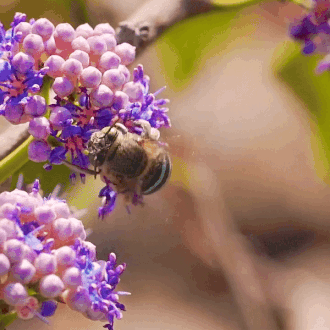

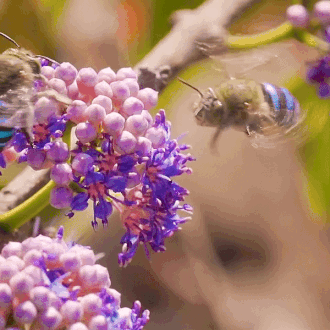
vishalvjadhav on ig
#stim#bees#insects#nature#sfw#purple#blue#black#brown#green#bugs#wings#animals#flowers#plants#blue banded bee#amegilla cingulata#ishy gifs#postish
1K notes
·
View notes
Photo

Bee stamps 🐝
#i miss spring 🌷#bee#bees#bumblebee#bumble bee#flower#plants#flowers#potted flowers#potted plants#spring#cute animals#artists on tumblr#digital art#illustration#soft art#illust#cute#happy art#kawaii#chibi#drawing#artwork#my art#cute art
10K notes
·
View notes
Text
https://www.xerces.org/blog/want-to-save-bees-focus-on-habitat-not-honey-bees
Five reasons why honey bees can be a problem
Native plants need native bees. Native bees coevolved with our native plants and often have behavioral adaptations that make them better pollinators than honey bees. For example, buzz-pollination, in which a bee grasps a flower and shakes the pollen loose, is a behavior at which bumble bees and other large-bodied native bees excel, and one that honey bees lack.
Honey bees are sub-par pollinators. The way that honey bees interact with flowers means that they sometimes contribute little or nothing to pollination. Honey bees groom their pollen and carry it in neat pollen cakes, where it’s less likely to contact the stigma of another flower and pollinate it. They are also known “nectar robbers” of many plants, accessing their nectar in a way that means they don’t touch the pollen, often by biting a hole in the base of the flower. By contrast, many of our native bees tend to be messier, carrying pollen as dry grains, often all over their bodies where it’s more likely to pollinate the plant.
Hungry hives crowd out native pollinators. Introducing a single honey bee hive means 15,000 to 50,000 additional mouths to feed in an area that may already lack sufficient flowering resources. This increases competition with our native bees and raises the energy costs of foraging, which can be significant. One study calculated that over a period of three months, a single hive collects as much pollen as could support the development of 100,000 native solitary bees!
Honey bees can spread disease. Unfortunately, honey bees can spread diseases to our native bees—deformed wing virus, for example, can be passed from honey bees to bumble bees—and can also amplify and distribute diseases within a bee community.
Urban honey bee hive densities are often too high. There is growing evidence of negative impacts in towns and cities from the presence of honey bees. A recent study from Montreal showed that the number of species of native bees found in an area decreased when the number of honey bees went up. In Britain, the London Beekeepers Association found that some parts of that city had four times as many hives as the city’s gardens and parks could support. The conservation organization Buglife recommends creating two hectares (five acres) of habitat for each hive, several times the size of an average residential lot in the United States.
1K notes
·
View notes
Text
If you're in the U.S. and want to support local plants and pollinators, I hope you've heard of the Xerces Society. Weird name, but super cool resource for gardening for insect pollinators (and they work for other invertebrate species, too)
They've got regional native plant lists:
They've also got super helpful things in their resources section, including Washington's plan for helping bumble bees:
Another really cool resource is the National Wildlife Federation's list of key stone plant species by ecoregion:
2K notes
·
View notes
Text

🪻🌱🐝 💜 🌿 ✨ // violets & violet miner bees // part of my natives + pollinators series // gouache on paper
tiny violet miner bees (Andrena violae) are a specific pollinator: they pollinate wood & dog violets in the Northeast, and show a strong preference for blue violets. letting your grassy yard rewild itself and grow violets every spring not only lets you make violet syrup, it also gives violet miner bees their most important food source and increases local pollinator diversity.
#my art#gouache#illustration#painting#art#cottagecore#artists on tumblr#botanical#spring#violet#pollinator#pollinators#native wildflowers#native plants#eco lawn#botanical illustration#violet miner bee#bees#cw: insects#insects
818 notes
·
View notes
Text
farmer's market castiel this, soft plant dad castiel that. what about arsonist castiel?? what about vandalism castiel?? castiel takes up grave-robbing as a hobby
#sjonnie.text#also pls dont come for me i love bee plant dad farmers market castiel okay#i just think he can be an arsonist as well
898 notes
·
View notes
Photo
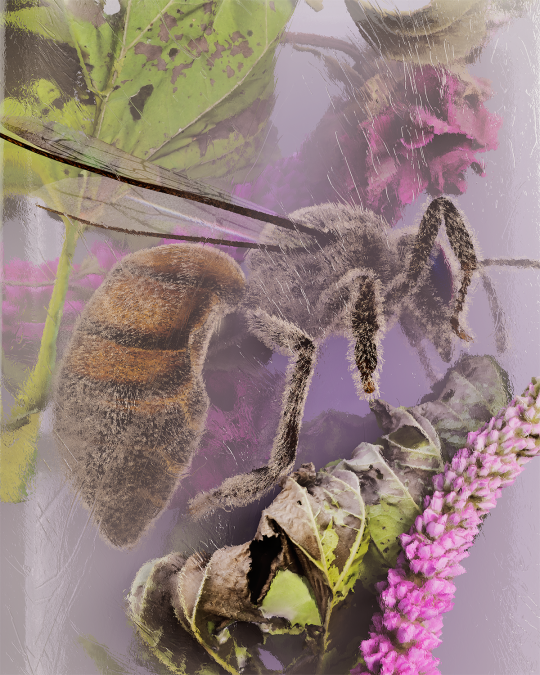
ItsNiceThat x BBC Earth - rosepilkington.com
453 notes
·
View notes
Text
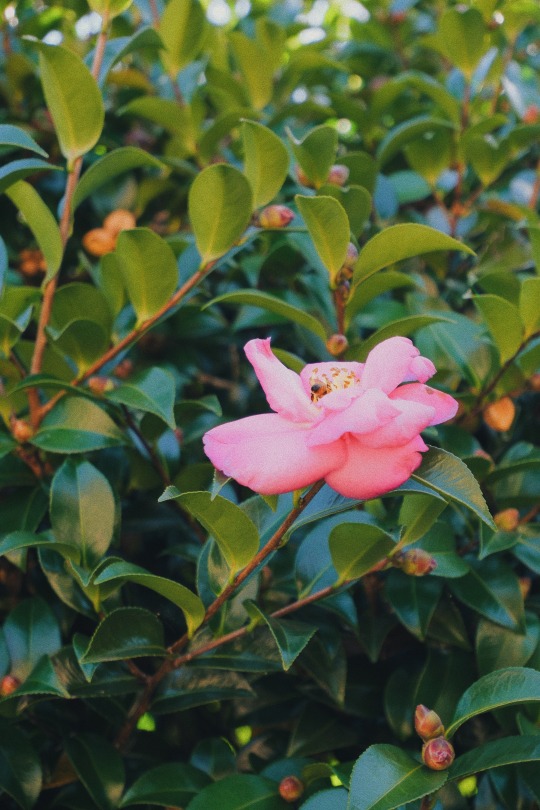
blaire snaps
240 notes
·
View notes
Text
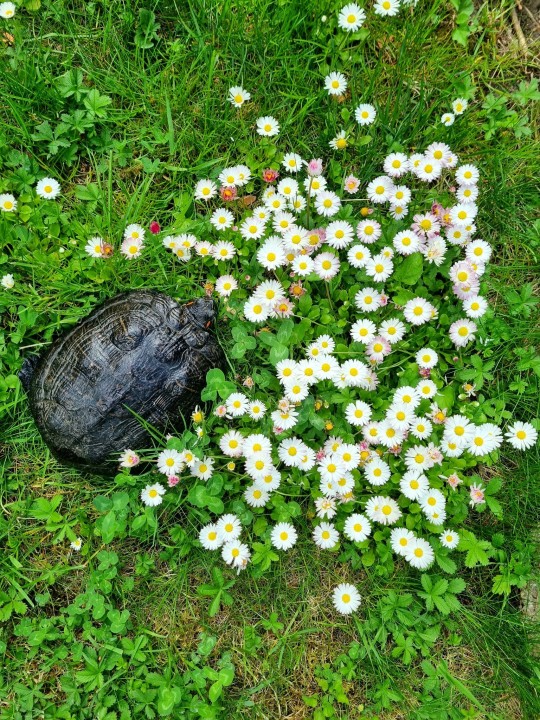

I never mow the patches of English daisies, not so much for the bees, as for her to see something pretty when walking around.
#not that I don't care about bees but there are plenty of other plants in my yard for them#red eared slider#english daisy#flowers#gardeners on tumblr#gardenblr#garden#gardenblog#gardening#gardencore
1K notes
·
View notes
Photo
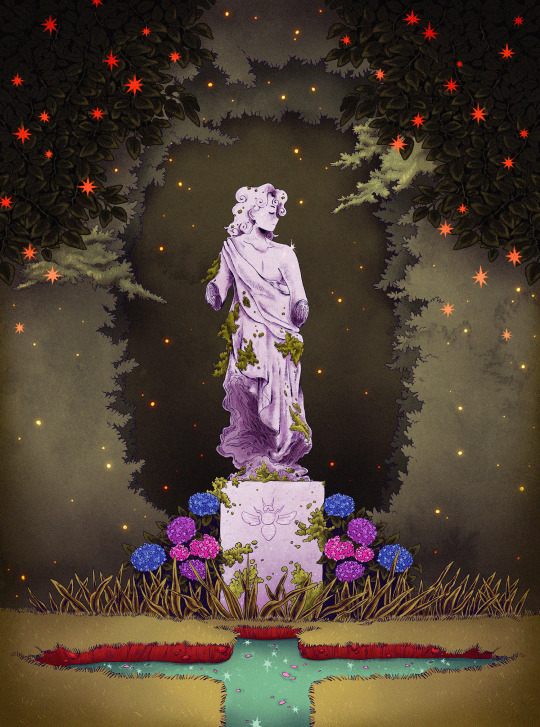
✴︎ guardian ✴︎
#illustration#aesthetic#plants#magical#hydrangeas#scenery#nature#stars#constellation#mysterious#fantastical#bee#botanical#green#garden#digital art#art ph#portfolio#artfart#prinsomnia
2K notes
·
View notes
Text
How people in the USA loved nature and knew the ways of the plants in the past vs. nowadays
I have been in the stacks at the library, reading a lot of magazine and journal articles, selecting those that are from over fifty years ago.
I do this because I want to see how people thought and the tools they had to come up with their ideas, and see if I can get perspective on the thoughts and ideas of nowadays
I've been looking at the journals and magazines about nature, gardening, plants, and wildlife, focusing on those from 1950-1970 or thereabouts. These are some unstructured observations.
The discourse about spraying poisons on everything in your garden/lawn has been virtually unchanged for the past 70 years; the main thing that's changed is the specific chemicals used, which in the past were chemicals now known to be horribly dangerous and toxic. In many cases, just as today, the people who opposed the poisons were considered as whackos overreacting to something mostly safe with a few risks that could be easily minimized. In short, history is not on the pesticides' side.
Compared with 50-70 years ago, today the "wilderness" areas of the USA are doing much better nowadays, but it actually appears that the areas with lots of human habitation are doing much worse nowadays.
I am especially stricken by references to wildflowers. There has definitely been a MASSIVE disappearance of flowers in the Eastern United States. I can tell this because of what flowers the old magazines reference as common or familiar wildflowers. Many of them are flowers that seem rare to me, which I have only seen in designated preserves.
There are a lot more lepidopterans (butterflies and moths) presumed to be familiar to the reader. And birds.
Yes, land ownership in the USA originated with colonization, but it appears that the preoccupation with who owns every little piece of land on a very nitpicking level has emerged more recently? In the magazines there is a sense of natural places as an unacknowledged commons. It is assumed that a person has access to "The creek," "The woods," "The field," "The pond" for simple rambling or enjoyment without personally owning property or directly asking permission to go onto another person's property.
There is very little talk of hiking and backpacking. I don't think I saw anything in the magazines about hiking or going on hikes, which is strange because nowadays hiking is the main outdoor activity people think of. Nature lovers 50-70 years ago described many more activities that were not very physically active, simply watching the birds or tending to one's garden or going on a nice walk. I feel this HAS to do with the immediately above point.
Gardening seems like it was more common, like in general. The discussion is about gardening without poisons or unsustainable practices, instead of trying to convince people to garden at all.
Overall, the range of animals and plants culturally considered to be common or familiar "backyard" creatures has narrowed significantly, even as the overall conservation status of animals and plants has improved.
This, to me, suggests two things that each may be possible: first, that the soils and environments of our suburbs and houses have sustained such a high level of cumulative damage that the life forms they once supported are no longer able to live, or second, that our way of managing our yards and inhabited areas has become steadily more destructive. Perhaps it may be the case that the minimum "acceptable" standard of lawn management has become more fastidious.
In conclusion, I feel that our relationship with nature has become more distant, even as the number of people who abstractly support the preservation of "wilderness" has increased. In the past, these wilderness preservation initiatives were a harder sell, but somehow, more people were in more direct contact with the more mundane parts of nature like flowers and birds, and had a personal relationship with those things.
And somehow, even with all the DDT and arsenic, the everyday outdoor spaces surrounding people's homes were not as broadly hostile to life even though the people might have FELT more hostile towards life. In 1960, a person hates woodpeckers, snakes and moths and his yard is constantly plagued by them: in 2024, a person enjoys the concept of woodpeckers, snakes and moths but rarely sees them, and is more likely to think of parks and preserves as the place they live and need to be protected. Large animals are mostly doing better in 2024, but the littlest ones, the wildflowers and bugs and birds, have declined steeply. It's not because "wilderness" is less; it seems more because non-wilderness has declined in quality.
2K notes
·
View notes




